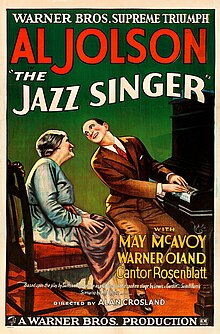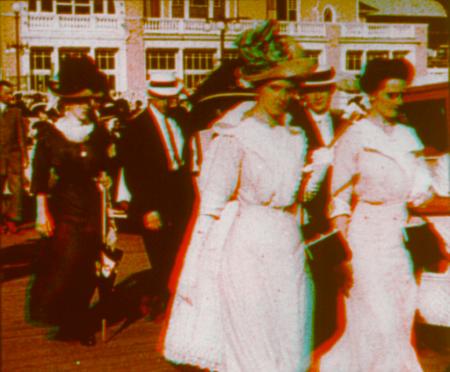As film continued to develop, a new side of movies was created. SOUND. Now sound as been around since the first set of ears were grown. However, there was never the combination of film and music or film and sound, unless there was a live orchestra preforming. Which personally I wouldn't be upset with a live orchestra at every production that I attended, because they rock. But still the demand was relevant because there was not enough bands to be at every production of a movie, and the silent films were losing their appeal.

Sound in movies first showed up in the 1900s. However, this was the earliest of types of movies and this is very apparent. The film would have to be played along with a record of the sound that was to accompany. However, to achieve perfect synchronization was a very difficult task, as the machines they had were not the top of the line in development. Most times you would find the sound would fall behind because of error with film jumping, or the turn table playing the record would slow down. This also limited length of movies now, because they were only able to record certain times of music and sound on a record.

AS sound was developing, experiments were also being taken on the actual film of the movies. COlor was a necessary development if the producers wanted to continually move toward that realistic feel of films. The first technique to add color was done in 1907 with the invention of Kinemacolor. This machine developed color in films by alternating the filters that were used on the film itself. The producers used red and green filters, and as the film was played, the image produce would blend colors together. This in a way tricked the eye into making colors appear, even though they were technically developed as only red and green or black and white.


 Then with another adaptation, producers found that although a two color filtering system was producing some of the effects that they wanted, a better filter system would produce a more realistic representation of the colorful world that the eye perceives. This was called TECHNICOLOR, and holy cow did it create an explosion in the movie world. (Reminder music was developing at the same time, this is when the world begins to hear movies talk)
Then with another adaptation, producers found that although a two color filtering system was producing some of the effects that they wanted, a better filter system would produce a more realistic representation of the colorful world that the eye perceives. This was called TECHNICOLOR, and holy cow did it create an explosion in the movie world. (Reminder music was developing at the same time, this is when the world begins to hear movies talk)This creation employed the use of the filtering system, however it was no longer an alternating disk producing the filter. There were three films recording at the same time, and each film was through a different filter: Red, Green, and BLUE...hence RGB. These films were then laid on top of each other when produced, thus creating the color that was seen on movies. In 1916 the first technicolor camera was developed, and with the production of Disney films and then the 1939 production of the "Wizard of Oz," color had taken its place as the leader in Hollywood.

No comments:
Post a Comment